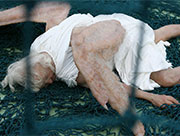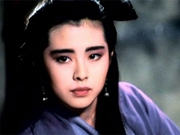

Since ancient times, Sichuan has been well known for brocade and embroidery.
The technique of Shu embroidery began to take shape in the Han Dynasty (206 BC-AD 220) and was one of the top four Chinese embroidery schools, along with Su Embroidery in Jiangsu, Xiang Embroidery in Hunan and Yue Embroidery in Guangdong. The most well-known among the four, Shu Embroidery has 120 kinds of stitches, and features fluid lines and bright colors, which look natural and vivid.
A thriving art in the Han Dynasty, Shu Brocade reached its apex in the Tang Dynasty (AD 618-907) and was the specialty of ancient Chengdu. The technique of Shu Brocade weaving was listed as China’s national-level intangible cultural heritage in 2006. It takes two people working at the same time on a traditional Shu Brocade patterning tower loom to produce the brocade.
The Chengdu Shu Brocade and Embroidery Museum opened in 2009 and is composed of three parts: the exhibition of Shu brocade and embroidery, artworks for sale, and a workshop where visitors can get up close with craftsmen.
 |
Day|Week

 Top 10 international destinations for Chinese millionaires
Top 10 international destinations for Chinese millionaires New-type self-propelled gun fires in drill
New-type self-propelled gun fires in drill Chinese artists create 'fall of an angel'
Chinese artists create 'fall of an angel' PLA's only woman CBRN emergence rescue team
PLA's only woman CBRN emergence rescue team Stunning! Gorgeous girls practice yoga on 2,000-meter-high cliff
Stunning! Gorgeous girls practice yoga on 2,000-meter-high cliff A glimpse of China's Zijinshan gold & copper mine
A glimpse of China's Zijinshan gold & copper mine Hot figure show in SW China
Hot figure show in SW China Evolution of Chinese beauties in a century
Evolution of Chinese beauties in a century